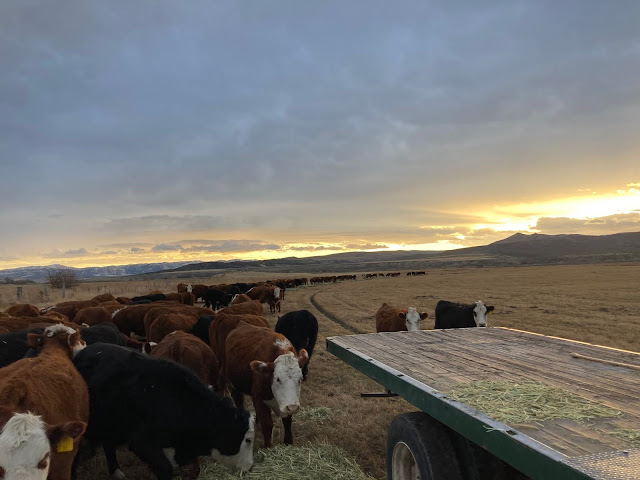I’ve been cooking like Mom lately. I’ve been bypassing the kale and avocados, cool vegies, and relying more on red potatoes from the garden, my own home-canned green beans and frozen corn from the local truck garden. Not a bad place to start. What isn’t like Mom is the absence of homemade white bread. Mmmmm.
It’s another sunny day, so unlike a normal January. Last evening I took my dog with me to pile cottonwood limbs for burning later. The moon was out making tree shadows; an owl hooted above us. I kept having to call Dot back from stalking the horses in the pasture. As we walked back to the house, the lights shone through the windows and I knew Mark was in for the night. These moments, so simple and commonplace, fill me up.
We’ve been together – alone – for quite a few years now. We had a fabulous time with our three kids, but this is so familiar now I can hardly remember the excitement of raising a young family. Oh, the passages of life.
Other than getting their daily ration of hay, the cattle are mostly set until calving starts. Someone might need some individual attention, but it’s kind of quiet around here. There’s been lots of winters where Mark spends his days moving snow and fighting the cold. Keeping the equipment running and the water troughs open can occupy a rancher’s day in frigid temperatures. This year is different though and Mark has had time to work on other projects.
Though we love the mild weather, we really need more snow. It’s supposed to be cold in January, cold enough to keep things in equilibrium, to destroy pests that shouldn’t overwinter, to keep snow frozen solid, and to challenge us enough to keep us mentally and physically strong. I told Mark that feeding cows this winter was child’s play. No frozen strings, no getting stuck, no snow covered, soppy wet bales.
But, heck, February could be lying in wait for us with its talons bared. February can be like that.
I think about the phrase I picked up in my reading this winter: “The West was built on the backs of snowpacks.” Deep snow acts as a natural reservoir. As it melts, it trickles into the soil profile to feed springs and rivers throughout the summer. It also feeds the aquifer beneath our feet. The one that we can’t see but that scientists measure, and about which officials educate, they regulate and divvy up.
Newcomers to Idaho don’t give our precious water a second thought. The tap turns on every morning, a hot shower flows daily, and the crops they drive by on their way to work look green and lovely. But it doesn’t just happen. Those mountains, perhaps the same ones that drew them to our state in the first place, need to be white in the winter for us all to have enough water the rest of the year.
Snow is in the forecast next week. I promise not to complain
about wet gloves on the feed wagon, even if we get stuck.
 |
| perfect burning conditions |



